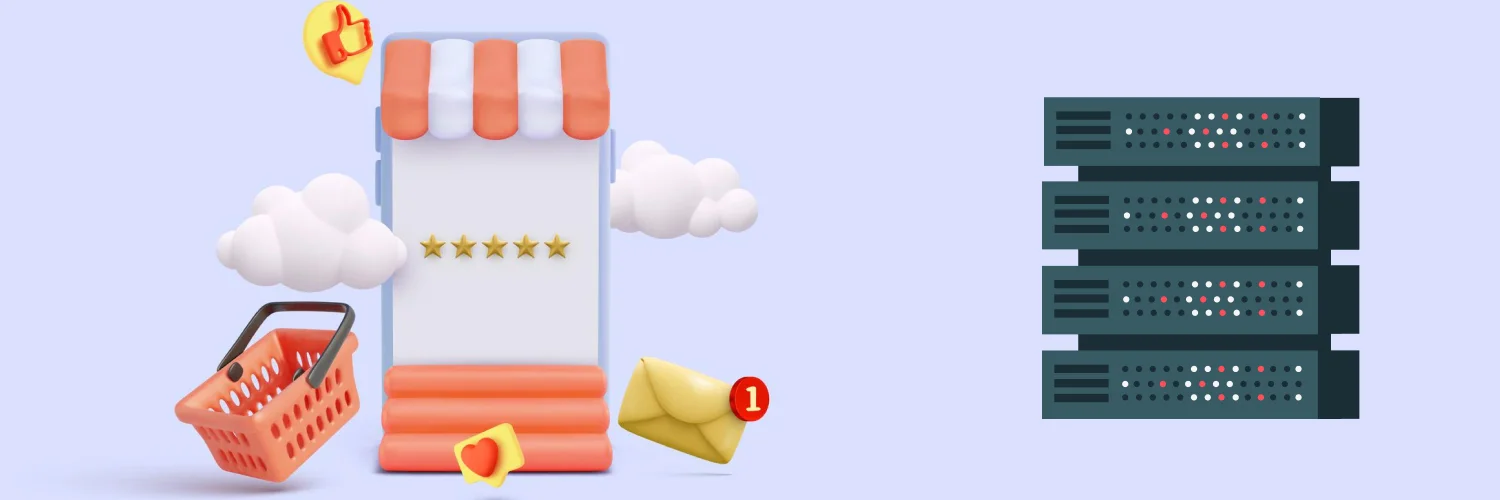The Ultimate Guide to Conducting a Retail Competitive Analysis for eCommerce
The internet is a vast global marketplace that gives consumers access to limitless information as well as a massive number of product and service options. In the fast-paced, ever-evolving world of eCommerce, understanding and staying ahead of the competition is crucial for your business to enjoy both sustainable growth and success. Conducting a comprehensive retail competitive analysis is an indispensable tool for gaining valuable insights into market trends, understanding customer behavior, and making informed business decisions to enhance and optimize your own eCommerce business.
In this blog post, we will delve into the intricacies of conducting an effective retail competitive analysis in the retail industry for eCommerce. We will discuss what retail competitor analysis is, why it is important, and how to conduct such analysis. We will also provide you with practical steps and actionable strategies to perform a retail competitive analysis that will help you stand out in a crowded marketplace and even outshine your rivals.
What is a Retail Competitive Analysis?

A retail competitive analysis, which is also known as a competitive environment analysis, is an evaluation a retail company can undertake to assess its position in the market within its industry. Retail competitive analysis allows you to see a different perspective from which to compare your competitors’ product offerings and eCommerce marketing strategies against your company’s. It also allows you to gain insight into the overall performance of your own brand amongst your various competitors. The type of evaluation performed during a retail competitive analysis can provide you with detailed information and data that can allow you to assess the weaknesses and strengths of the competition in your particular industry.
By examining such competitive data analytics, you can gain a better understanding of the most effective sales tactics and marketing strategies among your target customer base and within your industry or niche.
An often-cited work detailing the importance of retail competitive analysis is a 1994 paper titled “Market Segmentation and Competitive Analysis for Supermarket Retailing” written by Thomas Reutterer.
What Are the Benefits of Competitor Analysis for eCommerce?

Performing a retail competitive analysis can benefit your eCommerce business in a number of ways. We will delve into the details of some of the most common benefits of retail competitive analysis below.
Retail competitive analysis can help you stay up-to-date with the latest market trends.
Retail competitive analysis can give you important insights into consumer preferences, customer behaviors, and evolving customer demands. Staying on top of current trends in your niche by frequently monitoring your retail eCommerce competitors can help your brand to stay relevant and remain competitive with other companies.
It can help you to understand the competitive landscape.
Retail competitor analysis can give you a comprehensive overview of the competitive landscape within your industry or niche. It can help you to determine who your direct and indirect competitors are as well as the products they offer, their pricing strategies, the marketing tactics they use, and their strengths and weaknesses.
It can give you insight into your competitors’ unique selling points.
Performing retail competitive analysis can highlight the features that set certain competitors apart from the rest. You can use this information as an opportunity to enhance your own brand.
It can allow you to identify risks and obstacles.
Retail competitive analysis can help you to gain an understanding of threats, risks, and challenges you might otherwise not notice. By evaluating your competitors on a regular basis and tweaking your online marketing, you can prevent them from poaching your customer base, which is not uncommon in the retailing game.
Retail competitive analysis can help you to identify gaps in the market.
Performing retail competitive analysis can show you where the competitors in your niche may fall short. This insight can allow you the opportunity to fill such gaps in the market where your competitors fail to meet the customer’s needs.
It can potentially reduce your company’s marketing costs.
Retail competitive analysis can give you insight into both the advantages and the drawbacks of the marketing strategies your competitors have tried. This can allow you to glean such helpful information without dumping marketing dollars into costly campaigns yourself.
It can help you to benchmark your company’s performance.
By evaluating your competitors’ performance in areas such as sales, customer satisfaction, market share, and online presence, you can benchmark your own company’s performance against theirs. This can allow you to determine your company’s strengths and weaknesses in comparison.
Steps in Conducting a Retail Competitor Analysis

The process of conducting a retail competitive analysis may differ depending on your company’s specific niche. Even so, there are some basic steps any company should follow to perform a successful and informative retail competitive analysis.
1. Define your goals and objectives
Before embarking on a retail competitive analysis, it’s essential to define your company’s goals and objectives. Determine what specific areas of your business you want to evaluate and improve. Are you aiming to enhance your pricing strategy, optimize your product assortment, identify new market opportunities, or refine your marketing campaigns? Defining clear objectives will help you to focus your retail competitive analysis and extract the most relevant insights from the data you collect.
2. Identify your key competitors
Identifying who your competitors are is the first step towards conducting a comprehensive retail competitive analysis. Creating a list of all your relevant competitors can give you a clearer and deeper understanding of your company’s place in the market.
You should start by looking at your company’s direct competitors, which are those businesses that offer similar products or services to those your company offers. Explore both established and emerging players in your niche.
Additionally, you should consider indirect competitors. Evaluating information from these companies may provide alternative solutions to allow you to meet the needs of your customers. Social media platforms, search engine queries, online directories, market research tools, and industry publications can also be valuable resources to help you to identify and compile a comprehensive list of key competitors in your niche.
3. Analyze your competitors’ websites
Undertaking a thorough examination of your competitors’ websites is crucial when you are conducting a retail competitive analysis. A competitor’s website is a treasure trove of valuable information. You should explore multiple aspects of their website, including:
- Website layout
- The user experience their website provides
- Product assortment
- Product pricing
- Sales and promotions
- Customer reviews
Pay attention to each competitor’s unique selling propositions (USPs), checkout processes, shipping options, and customer support. Analyzing each competitor’s website will help you identify both strengths and weaknesses in their company’s online presence. You can then compare each aspect of their website with your own, allowing you to differentiate your company and enhance the online experience for your customers.
4. Evaluate your competitors’ product assortment and pricing
Assessing your competitors’ product assortment and pricing is vital for remaining competitive in the market. Evaluate your competitors’ products and product lines by analyzing their range of products, including variations, sizes, and colors. Consider the quality and uniqueness of their products. You may also wish to acquire information relating to the distribution of your competitors’ products. This may include researching information such as the distribution companies they use; where each competitor distributes their items; your competitors’ in-store locations; and the quantity and variety of products they offer at each location.
Pricing also plays a significant role in eCommerce success. Understanding your competition’s pricing strategy is an essential part of performing any retail competitive analysis. Examine their product prices, discounts, promotions, and shipping costs. Look for pricing trends, identify any price advantages they may have, and assess the perceived value of their product offerings as compared to yours. Contrast each competitor’s pricing strategy with yours and determine whether each competitor uses a premium, discount, or value-based pricing approach. Identify any gaps or opportunities in the market that your company can fill. This type of analysis can help you to optimize your pricing strategy and remain competitive in the market.
5. Explore their marketing and promotional strategies
Marketing is the most effective tool any business can use to showcase its offerings to potential customers. As such, it stands to reason that digital marketing is a vital component of the success of any eCommerce company. Studying marketing and promotional strategies your competition uses can provide you with valuable insights into how they acquire and retain customers.
Examine your competitors’ online marketing efforts, including their SEO strategies, social media presence, content marketing efforts, email marketing campaigns, and paid advertising campaigns. Analyze their messaging, branding, and positioning. Take note of any partnerships or collaborations they engage in. Evaluate their customer loyalty programs and incentives to identify areas for improvement in your own marketing strategies. Look for keywords they are targeting, the effectiveness of their social media engagement, and the overall quality of their content. You may also find it helpful to study the individual marketing mediums your competitors use, including digital channels, traditional advertising methods, and even in-store signage and promotions.
Evaluating your competitors’ marketing strategies can provide useful insights into some of the most successful marketing tactics, which can help you to refine your own company’s digital marketing strategy.
6. Assess their customer experience and support
A positive customer experience is crucial for an eCommerce company to succeed. Analyze the various customer support channels your competitors use to connect with their customers, such as live chat, email, phone, or even social media. Evaluate each company’s return policies, shipping options, and expected delivery times. Assess their checkout process to determine its user-friendliness. Look for any pain points or problem areas where your company can provide a more positive overall customer experience. This can help to give your company a competitive edge.
7. Examine their online reputation and customer feedback
Online reputation and customer feedback can be a goldmine of information. They can provide you with valuable insights into your competitors’ strengths and weaknesses from the perspective of their customers.
Analyze your competitors’ customer reviews, ratings, and feedback across various platforms. Monitor review platforms, social media channels, and online forums to gather pertinent customer opinions. Identify any common pain points, customer preferences, recurring praises, and areas where your competitors seem to either excel or fall short. Assess how your competitors handle any negative feedback and how they address customer concerns or public relations setbacks.
Evaluating this area will give you the opportunity to enhance the experience of your own customers as well as to address any potential gaps in the market.
8. Evaluate their market shares
Market share is a particular company’s percentage of total sales within a given industry over a specified time period. With access to the pertinent information, market share is easy to calculate; simply take the company’s total sales within the specified time period and divide that total by the industry’s total sales within the same time period.
Understanding how much of the market each of your competitors commands can give you insight into each company’s current success and potential future success.
9. Monitor their social media channels
Social media platforms can also provide valuable insights into your competitors’ brand reputation, customer engagement, and market trends. Follow your competitors on social media channels and analyze their post content, engagement levels, and customer interactions. Look for trends, popular campaigns, and influencers they collaborate with. This analysis will guide you in optimizing your social media strategy and staying ahead in the digital landscape.
10. Stay abreast of market trends
To remain competitive, it’s crucial to stay informed about the latest market trends, innovations, and emerging technologies in your industry. Subscribe to industry newsletters, follow thought leaders, attend conferences, and join relevant forums or communities. Follow industry publications and blogs to stay updated. Attend relevant conferences and trade shows to take advantage of networking opportunities and to gather insights. Explore the emerging technologies and strategies being adopted by your competitors. Continuously adapt and innovate to ensure your eCommerce business remains at the forefront of industry trends.
By staying updated, you can identify new opportunities, anticipate market shifts, and adapt your eCommerce strategies accordingly.
Important Metrics to Measure

While conducting a retail competitive analysis, the metrics you choose to measure will depend on your niche and the specific questions your company wants answered. However, as an eCommerce retailer, you should strongly consider collecting the following key metrics during your ongoing retail competitive analysis.
Search engine optimization (SEO) analysis
Examining SEO analysis is paramount in this digital age, especially when it comes to companies that conduct business online. To evaluate your competitor’s performance on Google, examine their organic traffic rankings, organic keywords, backlink volumes, and domain authority. If you sell products on online sales platforms like Amazon or eBay, it’s also essential to analyze the rankings and keywords of the same products on those platforms.
Social media metrics
You can learn how to improve your brand’s social media engagement and identify gaps in the market by monitoring your competitors’ social media accounts. Take note of the competition’s followers; content, number, and frequency of posts each week; and active channels.
Pay-per-click (PPC) performance
You can obtain information about your competitors’ PPC performance to help you enhance your own pay-per-click and other product marketing campaigns. Many competitive analysis services offer PPC competitor analysis tools to help you gain the upper hand.
Pay specific attention to the keywords your competitors use, as well as their PPC landing pages, website quality, and estimated PPC traffic to gain the most valuable insights.
Using Proxies to Conduct a Successful Retail Competitive Analysis

To obtain the volume of data you will need to perform the most effective possible retail competitive analysis, you can look at your competitors’ websites, social and digital media accounts, and customer feedback channels. Keep in mind that ethically sourcing publicly available data is of the utmost importance. But how can you obtain the necessary volume of data securely, ethically, and quickly?
Web scraping
This is where web scraping comes in. Web scraping is the process of gathering large amounts of structured, publicly available data from websites. This is usually done using a custom web scraping tool, such as Rayobyte’s Web Scraping API. These tools, sometimes referred to as “bots,” extract and organize the data they obtain from websites into a useful, readable format.
If you are new to web scraping, consider reading our recent blog post, “Web Scraping Tips for Beginners.”
Web scraping tools automate the process of data collection, which makes obtaining a large volume of data exponentially faster and easier than it would be to obtain the data manually. However, using a web scraper to gather data can result in your company’s IP address getting banned or even blacklisted on certain websites unless you take precautions to avoid this.
One important precaution you can take is to use proxies. When you are planning to use a web scraper to conduct a retail competitive analysis, a web scraping proxy is an invaluable tool to have at your disposal.
Using proxies to collect data
What are proxies? A proxy server functions as an intermediary server between you and a website that you (or your web scraper) are visiting. First, your internet request connects you to the proxy server, which masks your real IP address and displays a different IP address to the website.
Using proxies can help you avoid bans while conducting data collection activities by making your web scraper’s traffic appear more “human-like.” How does a proxy accomplish this?
By hiding your IP address
Many websites block any behavior that appears to come from a bot. Bot-like activity, such as that coming from a web scraper, can result in the website banning or blacklisting your unique IP address. Using a proxy allows you to access the website by using a different IP address (or even multiple IP addresses for the same website). Because of this, even if one of your proxy IP addresses gets banned, the proxy server will simply assign you a new one, allowing your bot to continue scraping.
By circumventing rate limits
Even if a website does not explicitly ban all web scraping or bot-like activity, it may very well limit the number of requests a web scraper can send during a specific time period. This can become an issue when you are attempting to scrape a website with a vast number of web pages. If your proxy IP address sends too many requests and exceeds the rate request limit for the specified duration, the website may ban the web scraper’s IP address.
Proxies allow you to bypass rate limits by sending requests from multiple IP addresses, ensuring your web scraper stays under the request rate limit for each IP address it uses.
By sending requests from a specific geographical location
Some websites display different content for different users depending on their geographical location, which a website can glean from the user’s IP address. By using proxy servers that offer IP addresses located in different places around the globe, your web scraper can get around such geographical barriers. Using IP addresses that are geographically connected to various places in the world can allow your web scraper to access the different location-based versions of the website.
Conclusion

Conducting a retail competitive analysis is a fundamental practice for eCommerce businesses seeking sustainable growth into the future. By defining your company’s goals and objectives, identifying your competitors, and thoroughly analyzing the various aspects of their eCommerce operations, you can gain valuable insights that can allow you to refine your own strategies and thereby gain a competitive advantage. Remember, retail competitive analysis should be an ongoing process, enabling you to stay ahead of the curve and adapt to ever-changing market dynamics. Armed with the knowledge and insights you gain from this analysis, you will be better equipped to make informed decisions and position your eCommerce business for both ongoing and long-term success.
For more information on the proxies that can best help you perform effective retail competitive analysis, visit Rayobyte’s website today.
The information contained within this article, including information posted by official staff, guest-submitted material, message board postings, or other third-party material is presented solely for the purposes of education and furtherance of the knowledge of the reader. All trademarks used in this publication are hereby acknowledged as the property of their respective owners.






